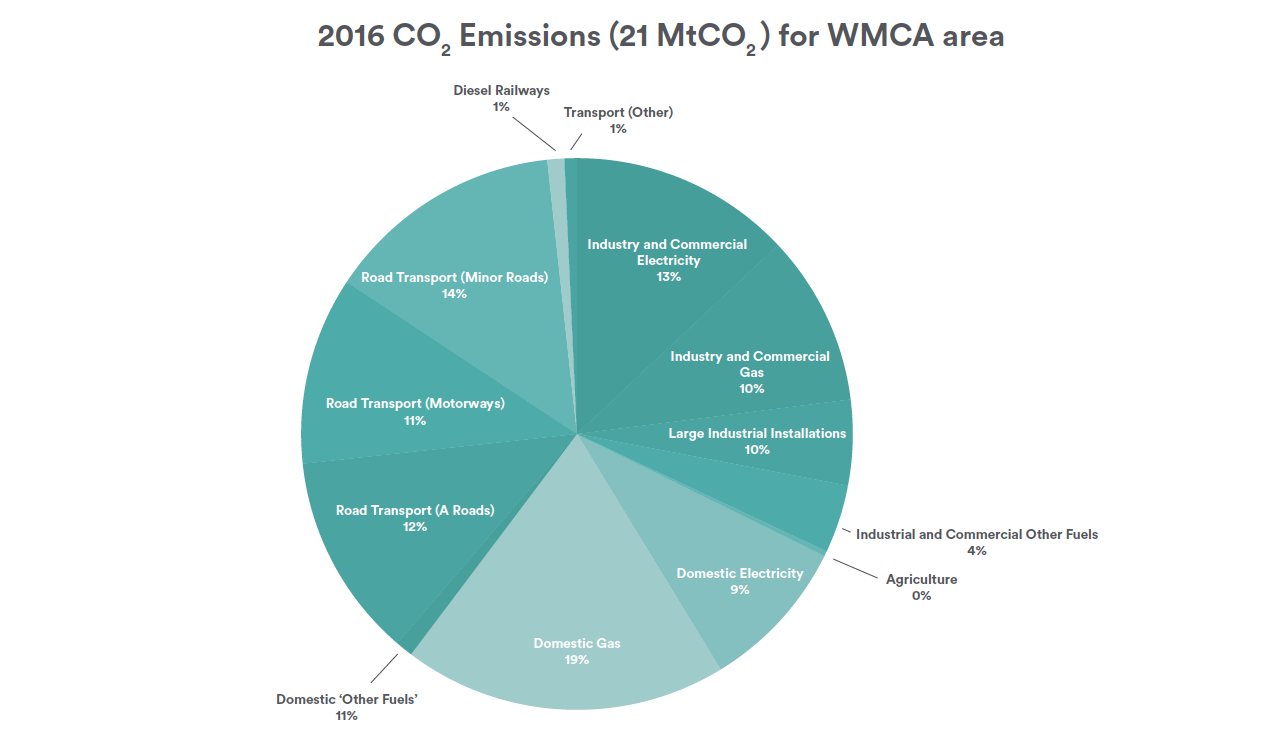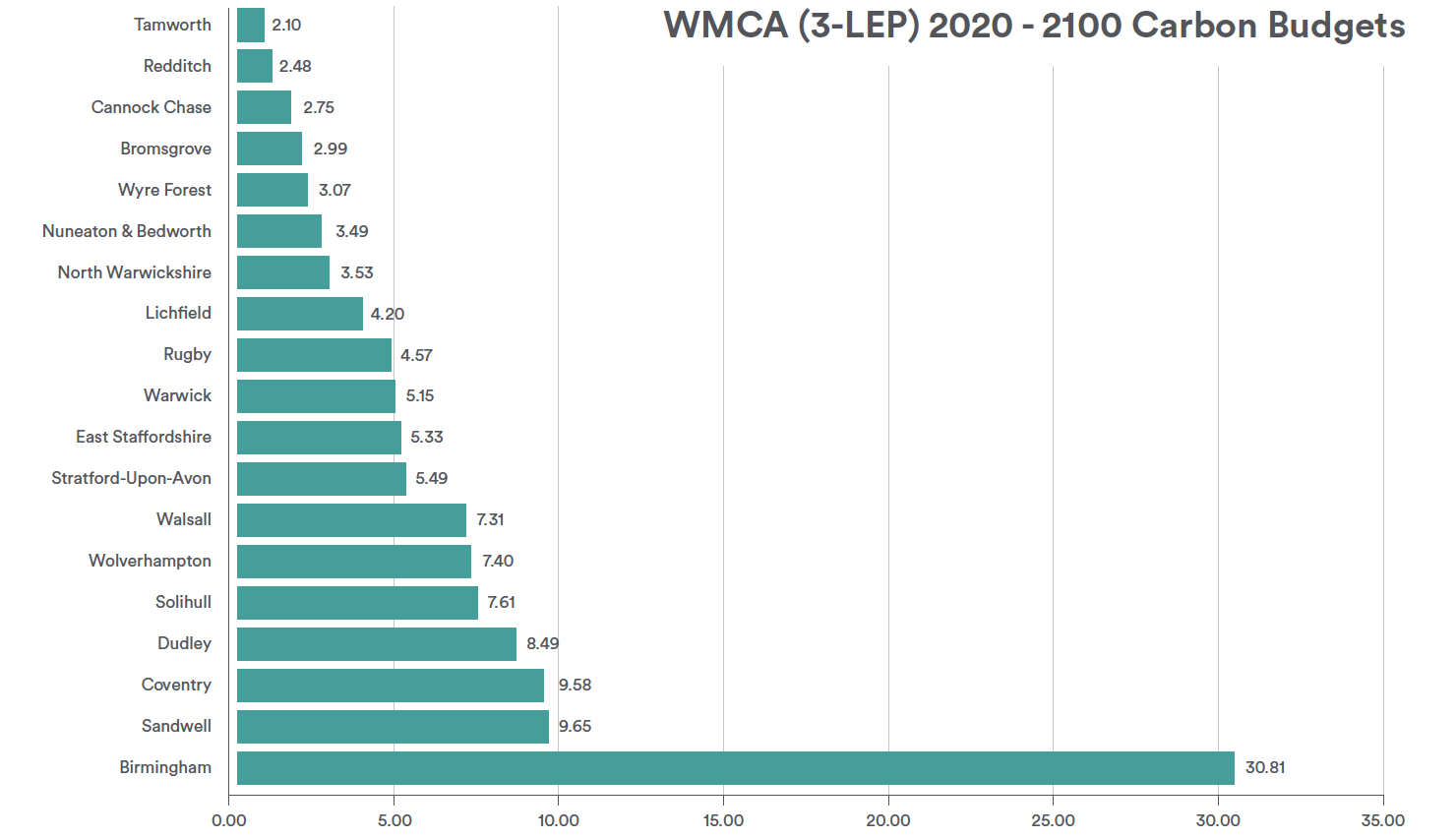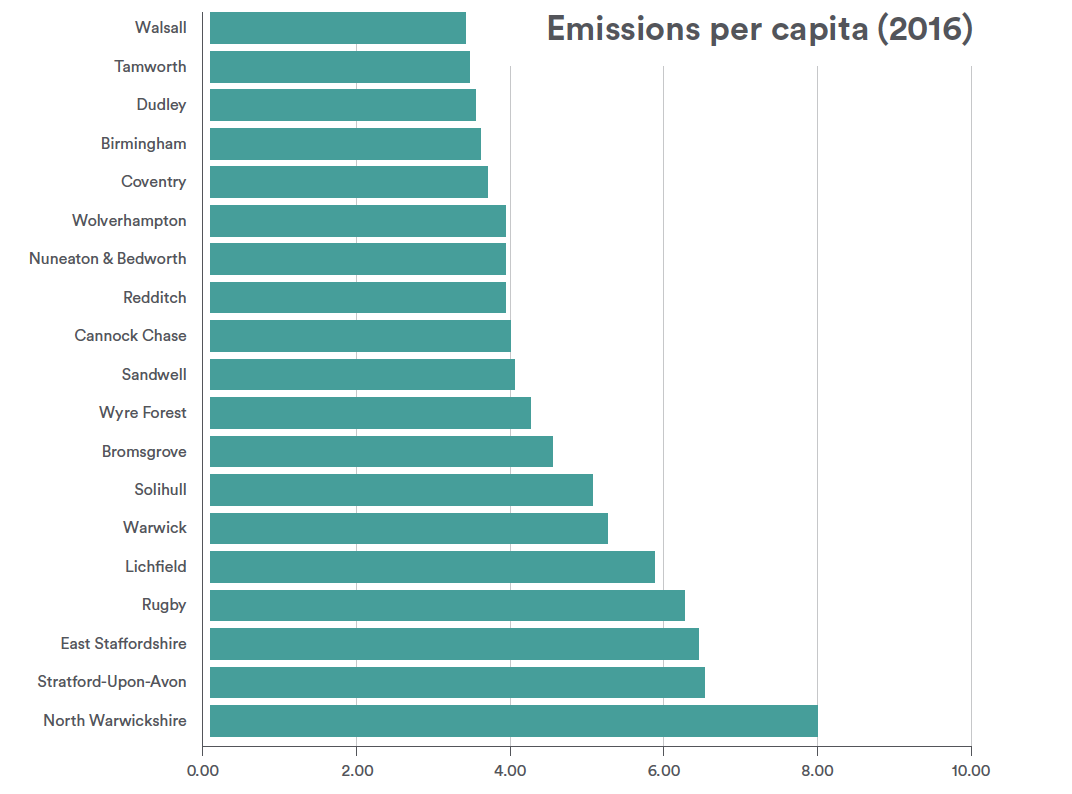Navigating the action plan
1. These ideas are not set in stone: the WMCA Climate Action Plan is a green paper. It is making a set of proposals, and using those as a basis for iteration and dialogue. Indeed, it is impossible to embark on changes of this magnitude without that dialogue. Some of the proposals will be existing policies and investments, but most of them will be ideas that the region will need to develop. If you want more, or something different, now is the time to ask for it.
2. WMCA is not leading everything: this is an attempt to outline what is required, at what level, and by when. It is an exercise in trying to lay out a collective challenge for the people and places of this region. The Mayoral WMCA is answerable to local people and the local authorities that comprise it, and a great deal of the sub-national legwork will be led by neighbourhoods, towns, and cities. Central Government also has an important part to play: whether it is in regulation, devolving its power, or investing money. As such, this plan will try to identify what is necessary and ‘who leads’.
3. Pace matters: in averting climate breakdown, the rule of thumb is “the earlier the better”. It is why WMCA Board plans to reach zero carbon 21 years into its 80 year carbon budget – the more we can do, the less climate change we lock in (and therefore have to adapt to). As such, the paper will estimate timescales for the suggested actions: - those which will need to done within five years, - those which will need to be need to be done between five and fifteen years, - those which will need to be done in the final five years leading up to 2041.
4. Find yourself, your place, and your organisation: everyone will have a role to play in getting this region to become zero carbon by 2041. Anyone who reads this plan should be able to see where their home, neighbourhood, town, city or place of work fits. If that isn’t clear – get in touch.
More action, faster
Why we need to change Summer 2019 saw two significant events in the West Midlands. In June, at the WMCA Annual General Meeting, the Board declared a climate emergency – inspired by the Youth Strike 4 Climate movement, who told the Board that they expected more from the region’s leadership.
In July, the WMCA Board passed an 80-year carbon budget1, which estimates the maximum carbon that can be emitted by the region whilst delivering on our obligations under the Paris Agreement. The Board also agreed that an estimated investment of 1-2 percent of regional GVA was required to ensure that it was possible to meet that budget. Between 2020 and 2041, this works out at about £40bn: an investment programme over five times larger than the one WMCA and its partners is currently delivering.
Without that investment, regional emissions will lock in between 3-4 degrees of warming – and the likelihood of reaching zero carbon at all by 2100 sharply diminishes.
Public Private Partnership
It is clear that we cannot create this money via prudential borrowing and taxation alone, even if that were supported by local people. Government must support the region through devolution, regulation and investment, and we need to work in partnership with businesses and third party organisations to stimulate the creation and use of innovative financial products, from community share issues to green bonds.
It is also clear that achieving our climate goals will require an unprecedented reduction in emissions, which is why WMCA has set a realistic timeframe for its zero carbon target, for 2041. Previous reductions have been possible because of a number of factors, which we either cannot or will not replicate. Firstly, because of EU directives2 mandating the closure of coal-fired power stations, and national scale installation of renewables. Large reductions in industrial emissions have also been caused by local deindustrialisation, but consumption has not declined at the same rate – suggesting we are just ‘offshoring’ our emissions to other countries. Finally, we need to understand that people living in poverty tend to contribute to emissions reductions. Our commitment to lifting people out of poverty remains implacable, but the consequences of doing so may well be increased emissions unless we change how we do this.
Some WMCA local authority partners have agreed to reach net zero carbon – either for their operations or the whole area – by 2030. This level of ambition is something that WMCA supports, and will strongly back any local authority partner that signs up to an earlier target – but in setting the regional target, we take into account that what we are aiming to do is unprecedented in this country, will require collaboration at all levels, and will require building the regional capacity to deliver and hold partners accountable, which takes time.
1. WMCA area comprising of the geography of the Black Country, Coventry and Warwickshire, and Greater Birmingham and Solihull Local Enterprise Partnerships. This made up of the unitary and district councils of Walsall, Wolverhampton, Sandwell, Dudley, Birmingham, Solihull, Cannock Chase, East Staffordshire, Lichfield, Wyre Forest, Bromsgrove, Redditch, Tamworth, Coventry, North Warwickshire, Nuneaton and Bedworth, Rugby, Stratford Upon Avon and Warwick. See: https://governance.wmca.org.uk/documents/s3219/Appendix.pdf
What has the region committed to?
The carbon budget committed the region to the following:

Figure 1
WMCA emissions in 2016: like most areas there is a relatively even split between commercial/industrial, domestic and transport sectoral emissions.
Staying within a cumulative carbon dioxide emissions budget of 126 million tonnes (MtCO2) for the period of 2020 to 2100.
A West Midlands target of net-zero emissions no later than 2041, with interim targets based on a 2018 baseline of 36% reduction by 2022, and 69% reduction by 2027, supported by the corresponding carbon budgets was set.
2. Initially, the Large Combustion Plant Directive (2001/80/EC), followed by the Industrial Emissions Directive (2010/75/EU).
By using a similar approach to the Tyndall Centre for Climate Change, we can infer the estimated 2020 – 2100 carbon budgets for all of the local authorities in the WMCA 3-LEP area:

Figure 2
The 2020-2100 carbon budgets for each local authority in the WMCA 3-LEP area, expressed in MtCO2 – these are estimated in order to frame action, and are not binding on the authorities listed above.
So, what does this mean? Firstly, let’s look at 2016 emissions on a per person basis, in each of the local authorities in the WMCA area:

Figure 3
Emissions (in tonnes) per capita for the year 2016, for each local authority in the WMCA 3-LEP area.
By looking at differences across the diverse places of the West Midlands, the following can be inferred:
- Density makes a difference: in cities / conurbations, people, energy, and items have less far to travel, and economies of scale are easier to realise. Furthermore, some homes in rural areas have less amenity to enable different choices: e.g. poorer public transport, or homes that are not connected to a gas main.
- People living in poverty are already low carbon: they are less likely to own a car, and generally consume less – e.g. by rationing heating to pay for food. As such, areas with significant poverty in the region tend to have lower per capita emissions – and emission drops in these areas can be partly attributed to rising poverty.
Understanding these differences will help us to come up with the right policies and investments for the many different places of the West Midlands.
Emissions explained
- A small family living in a Victorian midterrace, with one parent at home emits 4.5 tonnes of CO2.
- A typical family car would emit 5.37 tonnes of CO2 if it drove around the circumference of the earth.
Balancing the region’s carbon budget, and becoming zero carbon en route, will be a huge challenge to the West Midlands. If we carry on emitting carbon dioxide at 2016 levels, we will ‘spend’ 80 years of emissions in just six years.
Carbon budgeting for big investments will help us to ensure that they stack up: but this carbon budget is not the only challenge, and it is important to not see it as the only motivator for change.